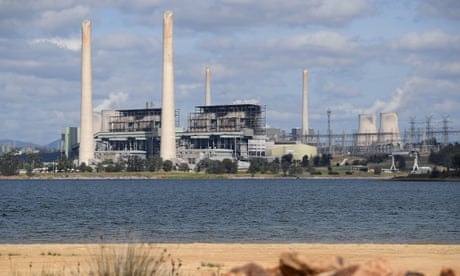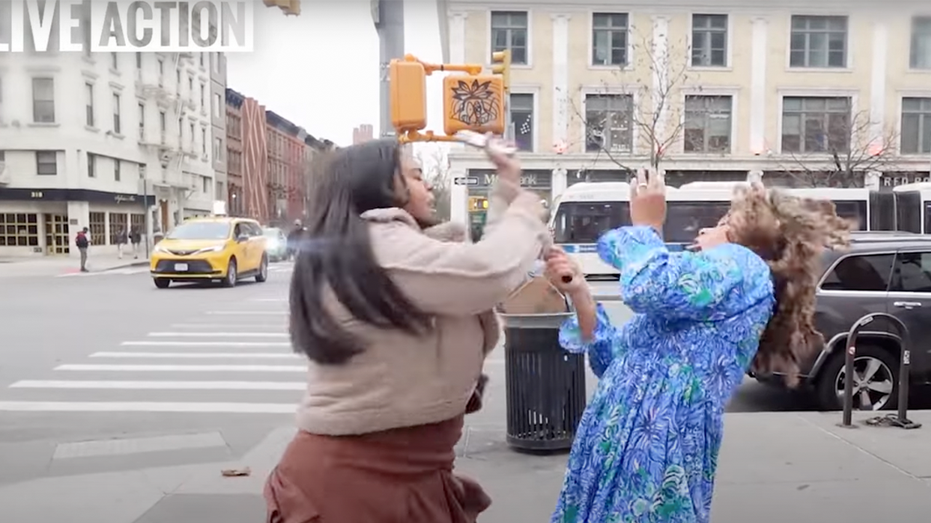- by foxnews
- 05 Apr 2025
As the Coalition and Labor pretend Australia?s ageing coal plants have a future, the figures don?t add up | Temperature check
As the Coalition and Labor pretend Australia’s ageing coal plants have a future, the figures don’t add up | Temperature check
- by theguardian
- 09 Dec 2021
- in news

Just how much coal-fired power will Australia have left running in 2030?
It has become a sensitive question for the country's major political parties ahead of next year's election.
Both parties have recently released data that suggests under their leadership the country's shift towards a clean electricity grid would accelerate dramatically over the next nine years. But both claim there will not be an accelerated closure of Australia's ageing coal plants that currently provide the bulk of the power.
It is an implausible argument given the scale of the shift under way. Over the past year about 31% of electricity in the national electricity market (covering the five eastern states and the ACT) has come from renewable energy. The proportion has doubled in just four years, but coal still dominates, providing 63% of electricity. Gas-fired power contributes 6%.
The Morrison government has not touted the figure, but official federal data suggests the proportion of renewable energy will hit 69% by 2030 if we continue on our current course.
Anthony Albanese says a Labor government would build on this by introducing a $20bn "re-wiring the nation" policy to connect solar and wind farms and batteries in renewable energy zones to the grid sooner than planned. Modelling of the ALP plan by the research firm RepuTex suggests that by 2030 the grid would run on 82% renewable electricity, leaving less than 20% coming from coal and gas combined.
In terms of greenhouse gas emissions, the Coalition expects a 55% cut from electricity generation by 2030 compared with 2005 levels on the current path. Labor's modelling implies a 74% cut from electricity over the same timeframe under its plan.
But in both cases the emissions reduction from the electricity sector is much bigger than that planned across the economy. Labor has set a 43% target - a notable improvement, but still less than what scientists say is necessary for Australia to play its part in living up to the Glasgow climate pact - while the Coalition has not increased the 26%-28% goal it set under Tony Abbott more than six years ago.
Chris Bowen, Labor's climate change and energy shadow minister, has been emphatic that the ALP plan would not lead to coal-fired power plants shutting earlier than scheduled.
How does this add up? It's not entirely clear.
The Australian Energy Market Operator lists 23GW of coal-fired capacity currently connected to the national market. Just four plants - Liddell and Vales Point in New South Wales, Yallourn in Victoria and Callide B in Queensland - are scheduled to close before 2030. They would cut the total coal capacity of the grid by about 24% compared with today.
But we know that other coal-fired plants are under financial strain. There is now so much cheap solar energy in the middle of the day that coal is barely needed at times. Kerry Schott, the former head of the Energy Security Board, earlier this year said coal companies were "going broke" and plants were likely to shut four or five years earlier than expected.
Officials in the federal energy department appear to agree. The official projections suggest the country (including Western Australia, which has its own grid) will have 14GW of coal capacity in 2030 under the Coalition - about a further 5GW reduction on what is formally scheduled to close by then.
A new analysis by the Institute for Energy Economics and Financial Analysis, a clean-energy focused thinktank, expresses this another way - it says there will be a more than 40% cut in coal power capacity between now and 2030 under the Coalition, based on its own documents. It assumes Labor's policy would lead to further closures.
The ALP rejects this. Bowen's argument is that Australia will need more electricity by 2030 as the country "electrifies everything" - industry starts to switch away from using fossil fuels as a direct feedstock to running on renewable power and there is a greater uptake of electric vehicles.
This is true. But the modelling released by Labor leaves out some details - for example, how much electricity use is expected to increase between now and 2030, and how often the coal-fired plants left connected to the grid would actually be operating.
Johanna Bowyer, a lead research analyst with IEEFA, says even with a rise in demand for electricity it "doesn't add up" to suggest there will not be more early coal closures.
"If you're at 82% renewables there is not much left for fossil fuel generators to actually generate," she says. "The only way they could be online is if they were generating some other payment that essentially subsidises them to sit there."
That subsidy could come in the form of a "capacity mechanism" that both the Coalition and Labor have backed to ensure there is the necessary support in the system that can be called on when needed to back up variable solar and wind. The Coalition says the mechanism would be "technology neutral" and not focused on coal, specifically; Labor says it should encourage investment in renewable energy and was a bridge to clean "dispatchable" technologies such as pumped hydro, hydrogen and batteries.
But that does not rule out both parties paying coal companies to keep a fleet of generators alive as backup, even if they are rarely, if ever, used. Experts say it is hard to see what else would keep so much coal in the system.
It would not necessarily lead to higher emissions - coal turbines do not emit when not turned on - but both sides of politics could expect questions about whether paying coal bosses to keep their plants idle is the best use of taxpayers' money.
There are other important questions. When will MPs of all colours level with voters in coal communities that the economics of clean energy and the need to address the climate crisis will inevitably mean coal plants shutting, or effectively shutting, earlier than planned? And what will they do to help give them a future in a post-coal world?
Peter Ridd, the former James Cook University professor who was sacked for breaches of the university's code of conduct relating to public commentary that the university said denigrated a colleague, has continued his criticism of scientists and government agencies working on the health of the Great Barrier Reef.
Ridd was given space in The Australian last Friday to argue an annual reef long-term monitoring survey by the Australian Institute of Marine Science (Aims) had found "spectacularly good results", and that across the reef's three regions there had "never been more coral since records began in the mid-1980s".
He accused Aims and others of ignoring this data, hoping nobody would notice and contriving a "spurious but apparently plausible reason that the good news is actually bad news" for the reef.
Aims has responded, saying Ridd has been "very selective" in quoting from its report. A spokesperson for the institute agreed with Ridd on one point - that the latest results showed the reef could recover during periods when it was not disturbed by mass bleaching, cyclones or other disturbances, and that this was good news.
But they said this had not yet lifted coral cover to record levels, and that Ridd consistently ignored a key point - that the scale, intensity and frequency of bleaching events had increased over the past decade, giving it less time to recover.
Ridd emphasised that fragile, fast-growing corals had driven a recent increase in overall hard coral cover, but the spokesperson said he ignored that all types of corals were affected by the unprecedented three mass bleaching events in 2016, 2017 and 2020, and the time between major disturbances was now too short for other coral types to recover.
They said Ridd continued to incorrectly reject the overwhelming scientific consensus that the climate crisis was the biggest threat to the reef, that oceans were warming and the reef would be increasingly susceptible to bleaching due to rising temperatures.
On this, the report was clear, saying: "Periods of low disturbance, such as that seen in 2021, are becoming shorter, reducing the time for recovery. The recovery to date will be easily undone by the next severe tropical cyclone or widespread bleaching event."
The Aims spokesperson said there was an inherent contradiction in Ridd's argument - he suggested both that Aims' survey was proof of a permanent recovery in coral cover and that its data could not be trusted.
"Unfortunately, he can't have it both ways," the spokesperson said.
- by foxnews
- descember 09, 2016
Excavation near site where Jesus was crucified and buried results in ancient discovery
Proof of ancient olive trees and grapevines, consistent with a Bible verse, has been found at the Church of the Holy Sepulchre in Jerusalem, an archaeologist confirms.
read more


